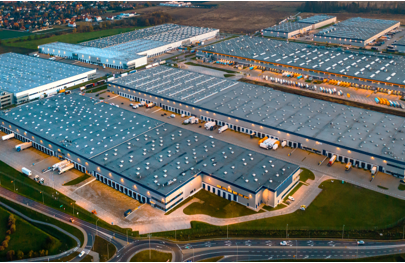آئی این پی ویلتھ پی کے
Qudsia Bano
China’s 2026–30 openness agenda, outlined at the Fourth Plenary Session of the 20th CPC Central Committee, marks a decisive shift toward high-standard institutional opening, innovative leadership, and modernized industrial systems. It emphasises strengthening advanced manufacturing, expanding two-way investment, promoting green transformation, and accelerating the development of a unified and efficient market system.
For Pakistan, this new direction presents timely opportunities to move beyond traditional manufacturing toward integrated free trade zones (FTZs), diversified export potential, and deeper economic participation in regional and global supply chains. In an interview with Wealth Pakistan, Barrister Zopash Khan, Co-Chair of The Society of Mediators and Partner at Pasha’s Associates, said that China’s agenda offers a valuable model for countries aiming to modernize their production and regulatory frameworks.
He noted that China’s shift toward innovation-driven industrialisation shows that economic growth today depends not only on physical infrastructure and factories but also on strong institutions, predictable governance, and transparent legal systems. In his view, Pakistan can draw inspiration from China’s emphasis on aligning technological development with people-centred governance. He highlighted that China’s approach demonstrates that innovation becomes sustainable only when supported by effective dispute resolution, responsible regulatory mechanisms, and an environment that encourages creativity and problem-solving.
According to Khan, Pakistan’s transition from traditional factories to efficient free trade zones must therefore include legal reforms, institutional stability, and knowledge-based development to attract investment and ensure long-term integration. The core pillar of China’s agenda is the establishment of a modern industrial system built on smart, green, and digitally integrated production. The plan seeks to upgrade traditional industries, cultivate emerging ones, and enhance the overall efficiency and resilience of the country’s industrial structure.
This shift opens wide avenues for Pakistan to align its industrial zones with advanced manufacturing standards. By absorbing Chinese expertise in automation, green technologies, and industrial planning, Pakistan can raise the competitiveness of its production lines and prepare industries to meet global requirements. Free trade zones in Pakistan could evolve into innovation-oriented clusters rather than simple assembly sites, especially if supported by modern logistics, export incentives, and technology partnerships.
Talking to Wealth Pakistan, Khalid Taimur Akram, an international relations expert from Pakistan, viewed China’s modernisation agenda as an opportunity for Pakistan to reposition itself within regional economic networks. He explained that China’s commitment to expanding institutional opening, promoting two-way investment, and developing new forms of trade provides Pakistan with a clear pathway to upgrade its own economic landscape.
He emphasised that if Pakistan aligns its special economic zones and free trade zones with China’s new openness standards, it can attract manufacturing relocation, diversify exports, and integrate into high-value global supply chains. He also noted that China’s focus on innovation, digital trade, and green development offers Pakistan a chance to build industries connected not just to the traditional goods but also to the digital and clean economy of the future.
According to him, Pakistan can benefit enormously from China’s experience in creating efficient bonded areas, tech-driven industrial parks, and export corridors that enable fast, seamless, and cost-effective trade. China’s agenda also prioritises domestic market development, improved market-driven allocation of resources, and reforms to enhance macroeconomic governance. These elements signal China’s intent to stimulate both domestic demand and international competitiveness simultaneously through its dual circulation strategy.
Pakistan can benefit from this shift by expanding its export basket, improving standards compliance, and strengthening its quality infrastructure. The agenda further emphasises coordinated regional development, agricultural modernisation, and rural revitalisation. For Pakistan, these areas offer entry points for cooperation in agribusiness technology, logistics, cold storage, and cross-border food supply chains, all of which can be integrated into free trade zones and export corridors that connect with Chinese markets.
Together, these elements of China’s 2026–30 openness agenda create a broad and practical framework for Pakistan to deepen economic integration. By adopting clearer regulations, modernising industrial zones, encouraging innovation, nurturing skilled talent, and facilitating investment, Pakistan can transition from a traditional manufacturing base to a dynamic network of free trade zones aligned with global standards. The next phase of Pakistan-China cooperation will depend not only on infrastructure, but on shared innovation, institutional efficiency, and the ability to translate opportunities into sustainable growth.

Credit: INP-WealthPk



